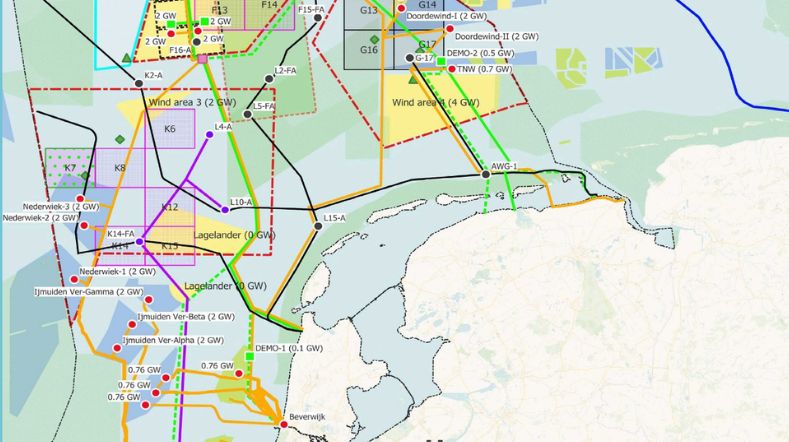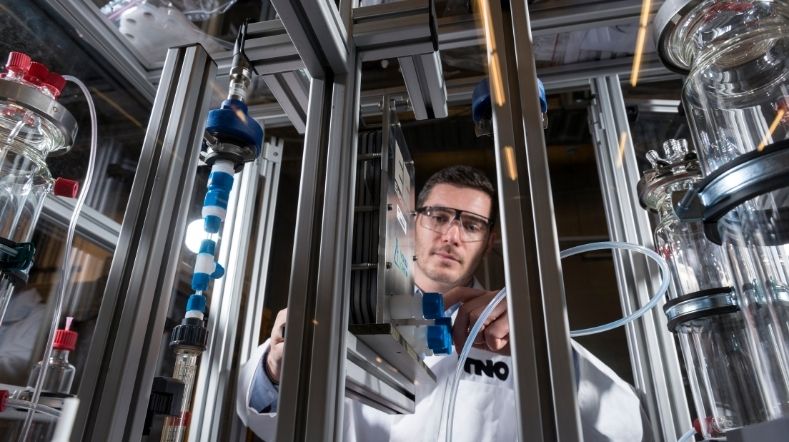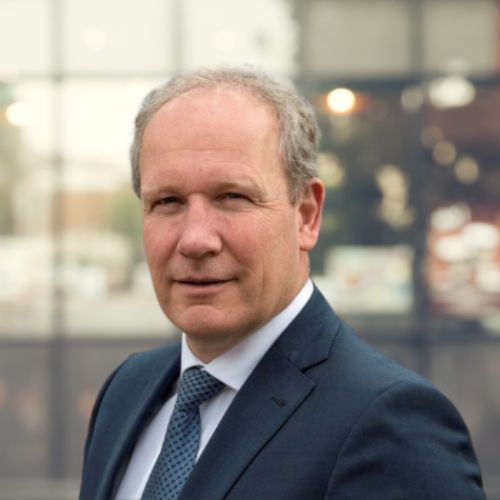
Accelerated expansion of energy infrastructure needed
A society without greenhouse gas emissions will require a substantial expansion of the energy infrastructure. The issue is complex and there are many uncertainties. We are researching the bottlenecks and advising governments and companies on the desired approach for the expansion of the energy infrastructure.
Energy infrastructure indispensable for emissions-free future
The 5 major industrial clusters in the Netherlands (North Netherlands, Rotterdam-Moerdijk, North Sea Canal area, Zeeland-West Brabant, and Chemelot in Limburg) have each prepared a Cluster Energy Strategy or CES. In it, they indicate how they are going to become more sustainable, what future demand for energy carriers they expect, and what energy infrastructure will be needed to achieve this.
If all companies implement all their plans, the industry itself will reduce total greenhouse gas emissions in the Netherlands by about 21 megatonnes (Mt) by 2030. The remaining 10 Mt will be achieved from outside the industry. Implementation of companies' plans depends in part on the timely availability of energy infrastructure and financing. If the government wants to support the industrial clusters in the transition to a future without CO2 emissions, then the requested infrastructure is indispensable. This is evident from, among other things, the report we prepared together with the Netherlands Environmental Assessment Agency and the Netherlands Enterprise Agency at the request of the Ministry of Economic Affairs and Climate Policy.
Energy infrastructure connects supply and demand
To make the energy transition possible, infrastructure is needed that connects demand, supply, and storage of electricity, hydrogen, heat, and CO2. The need for rapid infrastructure expansion is already evident in CES plans that envision a doubling of the industry’s demand for electricity from 43 terawatt hours (TWh) today to 128 TWh by 2030. This is about 80% of the total current electricity consumption in our country.
The need for hydrogen is also growing substantially in the CESs. In addition to 185 petajoules (PJ) of blue hydrogen (with the CO2 being captured), this means another 75 PJ of green hydrogen by 2030. This would require 9 gigawatts of installed capacity for electrolysis. The transport and storage of hydrogen also requires the expansion and modification of infrastructure.
Collaborating on the energy transition
In order to make the energy transition a reality and accelerate the expansion of energy infrastructure, collaboration is essential. Recently, we made important contributions to the roadmap (pdf) (in Dutch) for the electrification of industry and to the Climate and Energy Outlook. We did this together with the Netherlands Environmental Assessment Agency, the National Institute for Public Health and the Environment, and Statistics Netherlands. We are also involved as a knowledge institution in the National Programme Infrastructure Sustainable Industry. In this programme, the central government, industry, grid operators, energy producers, and regional governments work together to implement the energy infrastructure in a timely manner so that we can meet the goals set out in the Climate Agreement.
Get inspired
Energy infrastructure and transport


The North Sea as Europe's energy heart requires smart choices


Tomorrow’s hydrogen production and infrastructure: building towards a secure and robust energy system

World Hydrogen Summit 2025
Scaling-up electrochemical technologies for renewable ethylene production


